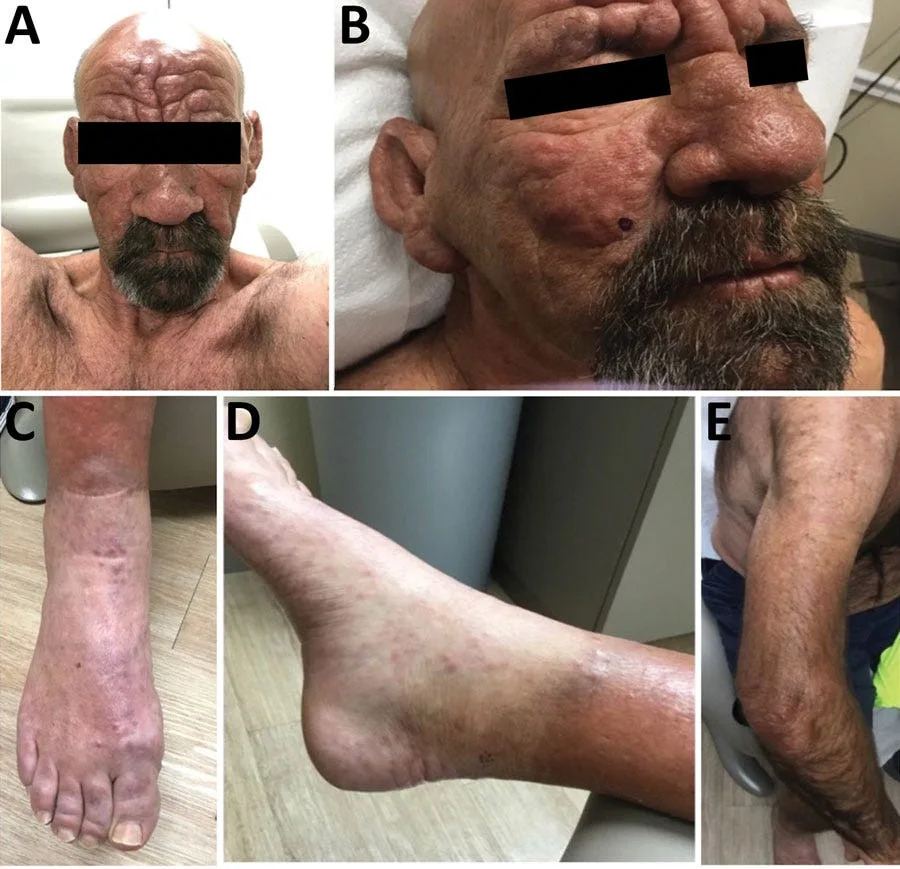USA Today
Leprosy could become endemic to Florida. Here is what to know.
Brandon Girod and Kinsey Crowley – July 31, 2023
Rising cases of leprosy in the Southeast U.S. point to the possibility of the disease becoming endemic to the region, and a high concentration of those cases were reported in central Florida.
In a recently published research letter, the Centers for Disease Control and Prevention (CDC) said that Florida is witnessing an increase in leprosy cases lacking traditional risk factors and recommending that travel to Florida be considered when conducting leprosy contact tracing in any state.
The number of reported leprosy cases across the country has doubled over the past decade, according to the CDC. Citing data from the National Hansen’s Disease Program, the CDC says there were 159 new cases reported in the U.S. in 2020. Nearly 70% of these new cases were reported in Florida, California, Louisiana, Hawaii, New York and Texas.
Leprosy, scientifically known as Hansen’s disease, has never been common in the U.S., with most cases previously involving people who immigrated from leprosy-endemic areas. But the new report shows that about 34% of the reported cases between 2015 and 2020 were locally acquired.

About the Florida leprosy outbreak
According to the report, Florida may represent an endemic location for leprosy and recommends that physicians consider leprosy in the appropriate clinical context in patients who have traveled to the area, even in the absence of other risk factors. Here is why:
- Florida is among the top reporting states for cases of leprosy.
- 80% of cases in Florida were in central Florida.
- Central Florida alone accounted for nearly 20% of the total number of cases reported nationally.
- Several new-case patients in central Florida demonstrated no clear evidence of zoonotic exposure or traditionally known risk factors.
What is leprosy and where did it come from?
Leprosy is a chronic infectious disease caused by Mycobacterium leprae that primarily affects the skin and peripheral nervous system. It can sometimes infect other parts of the body like the lining in the airway passages of the nose, according to the Florida Department of Health. It has been around for thousands of years, with the earliest known records appearing in China and India around 600 B.C.
Despite its biblical description, the disease is not easily spread and about 95% of people have natural protective immunity, according to the FDOH. Leprosy can be easy to treat, especially if it’s addressed early. However, going without treatment can result in permanent nerve damage.
The Mycobacterium leprae bacteria is slow growing and it can often take years for signs and symptoms to develop following exposure to the bacteria. Once the first sign of infection appears, it can take anywhere between two weeks to months for it to progress.
Can leprosy be cured?
Yes, leprosy is a curable disease. Doctors prescribe antibiotics to patients with leprosy. Patients are typically no longer infectious after a few days of antibiotics, but the treatment lasts between one to two years due to the bacteria’s slow growth.
What are the signs and symptoms of leprosy?
Early signs of leprosy include pale or slightly red areas or rash on the body that is often associated with a loss of sensation in the affected area, according to the FDOH.
Other symptoms include:
- Loss of feeling in hands and feet
- Dry, stiff and sometimes painful skin in the affected area
- Thinning of the eyebrows and eyelashes (if the face is involved)
- Nasal congestion is sometimes reported
If the disease goes untreated, weakness in the muscles of the hands and feet can also occur.
Malaria in Florida: Though malaria cases are waning, you should still take precautions, Sarasota County says
How does leprosy get transmitted or contracted?
Leprosy is contagious and can be transmitted by untreated people infected with the disease, however, most people have natural protective immunity. Exposure to people infected with leprosy should still be avoided, especially among family members as protective immunity is genetic.
How leprosy is transmitted isn’t fully known due to how uncommon it is. Scientists do know it’s not spread through casual contact, sexual transmission or from mother to fetus. The prevailing theory is that high levels of the bacteria are developed in a person’s nose and are spread to others not immune through prolonged contact.
The CDC hopes that local physicians can help identify and reduce the spread of the disease through their efforts to report cases and their support in further research to assess routes of transmission.
Can you get leprosy from armadillos?
Yes. A genetic study conducted at the National Hansen’s Disease Program found that armadillos in the southern U.S. develop a high number of M. leprae, that bacteria that causes leprosy. Transmission between animals to humans is low, but the program advises that people still take proper precautions around armadillos.
